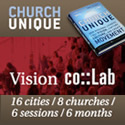Some US Cities Grapple With an Unusual Problem: Too Many Churches
- Posted by: Todd
- Posted on: Wed, December 20, 2006
- Viewed 32
- (1) comments so far
While communities traditionally zone against houses of ill-repute, not houses of worship, frustrations have grown since 2000, when then-President Clinton signed the Religious Land Use and Institutionalized Persons Act. The law doesn’t exempt churches from zoning regulations, per se. But when religious groups say the rules would create “a substantial burden,” officials must show a compelling reason for the limits. Sometimes, the results leave neighborhoods feeling helpless in the face of ecclesiastical development.
Across the country, local governments are challenging the law in court, says Marci Hamilton, a church-state scholar at Cardozo School of Law at Yeshiva University in New York. She believes the issue probably will reach the US Supreme Court.
“It’s happening all over the country,” Ms. Hamilton says. “I get an e-mail from a new neighborhood daily. It’s unbelievable because of this law what religious entities are willing to impose on residential neighborhoods.”
For their part, religious leaders say they are responding to growth in their communities by providing needed services. Growth among houses of worship - particularly megachurches - poses a delicate quandary for local leaders. In smaller communities, too many churches - because of their tax-exempt status - can even strain the economy.
The federal government exempts religious organizations from property taxes, but some cities have become creative in collecting money from churches, says Chris Hoene, research manager for the National League of Cities in Washington. For example, some have begun taxing religious organizations’ profit-generating enterprises, such as publishing. Especially in communities that operate on small margins, a small change in the budget can mean a big difference.
“It’s a growing concern, because ... the not-for-profit sector is continually noted as a fast-growing sector,” Mr. Hoene says.
In Stafford, Texas, leaders decided that with 51 places of worship and only 300 acres left to develop, they had too many churches. This Houston suburb of 20,000 balloons on Sundays, since many of the worshippers commute from outside the community, says Mayor Leonard Scarcella. With no property tax, the city’s budget was stretched. Leaders imposed new regulations that would subject anyone who wants to develop in Stafford to stricter review.
“We believe very strongly in God. If you want religion, you can get just about anything here,” Mr. Scarcella says. “We don’t have 51 of anything else.... We’re looking into ways that we can maintain balance.”
Tensions can run especially high over land residents hope to preserve for agriculture or conservation purposes.
In Maryland’s Montgomery County, leaders zoned 93,000 acres as an agricultural reserve in 1980. The zoning allowed churches, and there were about 60 scattered around, says Royce Hanson, chairman of the county planning board. More than a year ago, several megachurches sought to develop in the area.
Neighbors balked, and leaders rejected building plans that would have required their own water and sewer systems. Religious organizations haven’t sued yet, Mr. Hanson says, but they’re not happy with the decision. The plans were “out of character with the rural area,” he says. “Those of us who want to preserve the agricultural reserve believe it was a good solution.”
In southeast Orlando, Faith Assembly of God is paying the city impact fees of up to $1 million to build a new location to hold its 6,000 members, the Rev. Robb Hawks says. He says the argument that places of worship don’t pay for their own development is a fallacy. His church will hold weeklong activities at its current location, and hold worship services in its new home, which will be located right across from another large church.
Neighbors are concerned that the roads can’t handle the development, but Mr. Hawks offers no apology for his church’s growth. It’s a reflection of Orlando’s rampant development, he says.
“I find it fascinating that people will move into a housing development ... and the first thing they want to do is stop any developments going in around them,” Hawks says. “People come ... looking for community, and where do you find community?… They go looking for a church to not only fulfill their spiritual needs but their social needs as well.”
From The Christian Science Monitor
http://www.csmonitor.com/2006/1205/p02s02-ussc.html?s=t5
For Discussion: Are there too many churches in your neighborhood. Would your community be any different if half the churches shut down?
It’s rush hour in southeast Orlando - Sunday rush hour, that is. About a dozen churches are within a few miles of one another, and more are under construction. Neighbors venturing out for bagels and other errands find themselves stuck in traffic, heads bowed not in faith but frustration. Some complain that the traffic persists all week, as religious, youth, sports, and other activities draw crowds after work and school. “It’s ridiculous,” says Pat DeLanger, an accountant who was about to climb into her car on a recent Sunday with her teen-age daughter after a service at St. Isaac Jogues Catholic Church. She lives less than a mile away, but expects her Sunday morning drive to stretch to 30 minutes once construction on another church across the street is complete. “We live right there. We probably could walk faster.”
Comments
if you want a Globally Recognized Avatar (the images next to your profile) get them here. Once you sign up, they will displayed on any website that supports them.






jawbone on Wed, December 20, 2006
Apparently this isn’t a new problem. We just installed a new pastor to one of our fellowship churches in a town of 2400 with 10 churches. This particular church, as far as I know, is the newest church in town and it’s about 25 years old.
Churches are planted in fast growing areas and are opporunistic in a good sense. People are moving there in droves, there aren’t enough churches, they need to go to church, we start one and voila we have an instantaneous “successful” church plant.
Other churches are started as a denominational distinctive where there no churches of that particular brand. The rationale is that since we don’t have a Methodist, or Baptist or fill in your own brand here, then the kingdom of God is somehow being short-changed and we need to have a witness to fill that void.
Still some towns have multiple churches of the same denominations as a result of splits, or the growth of the town revealing the need for another branch.
The growing reluctance of communties to zone property for church purposes is going to make that a bit harder, but ultimately we can expect that neighbors will continue to complain about the traffic, noise and whatever else it is they don’t like about a church being in their community.
Page 1 of 1 pages
Post a Comment